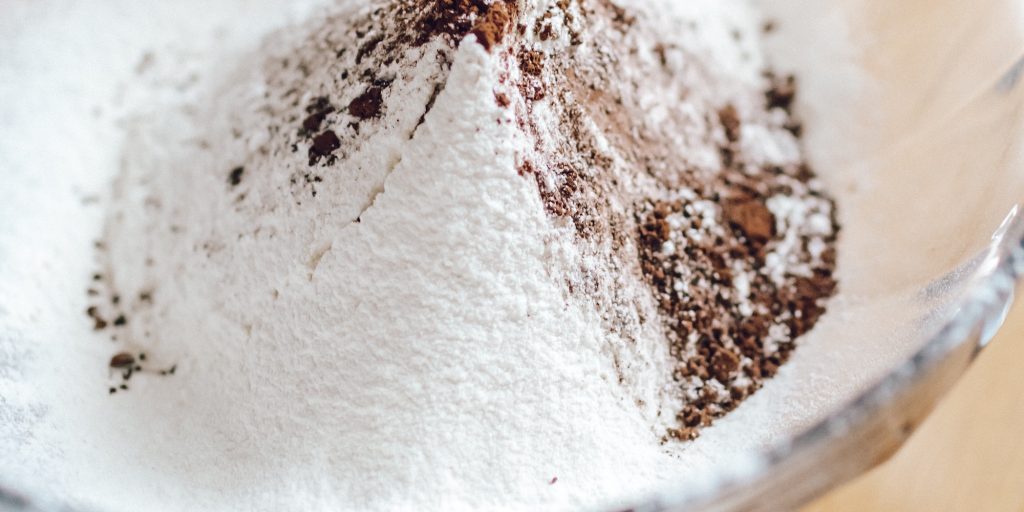It’s easy to mistake baking powder for baking soda, especially if you’re busy gathering ingredients. Both look similar on the recipe card. You’ll use them often in baking. Since both are used for baking and present in just about every cupboard, it’s easy to mix them up.
If you’ve accidentally used baking powder instead of baking soda, here are some tips on how to fix it.
How Can You Fix Your Recipe
Adding the wrong ingredient can spoil your recipe, causing it to rise too much or remain flat and dense. The result can taste awful, but you can fix it depending on the recipe. The result may be fluffier or have an unexpected taste, but you may not notice much of a difference.
You may have decided that fixing the recipe is better than wasting the ingredients. If you mixed the ingredients before you realized you made the error, there may be a solution.
If you’ve accidentally used baking powder instead of baking soda there’s still hope! You should know that as baking mistakes go, this one is fixable. As long as your baking powder is not too old, the following suggestions can help with your issue.
When trying to fix your dough or batter, consider what’s in the baking powder. Baking powder is baking soda with cream of tartar mixed in. You can make a tablespoon of baking powder by adding two teaspoons of cream of tartar to 1 teaspoon of baking soda.
One way to fix the mistake is to add more baking powder. For every teaspoon you use of baking soda, add two to three teaspoons of baking powder. This will result in the same amount of leavening. Depending on the recipe, the result may be a little bitter.
Another way to fix the mistake is to add a partial amount of the baking soda called for in the recipe. Some people have reported good results by adding about ¾ of the amount.
Other suggestions include substituting acidic ingredients for one with a neutral pH level:
- Use milk instead of yogurt or buttermilk
- Use water instead of white vinegar
- Use lemon extract or water instead of lemon juice
How Baking Powder and Baking Soda Are Alike
Both baking powder and baking soda are leavening agents. As far as substitutions go, baking powder is the best substitute for baking soda. This is because they share a common ingredient, sodium bicarbonate.
Baking powder produces fine bubbles that help baked goods rise. Each has a different reaction, so neither is used in the same manner.
How Baking Soda and Baker Powder Work
In general, mistakenly using baking powder instead of baking soda isn’t too big of a problem. Substituting baking soda instead of baking powder is a more complicated issue. Even with adjustments, the results may not be what you expect.
Baking soda and baking powder both work in three ways. Leavening agents release gases that create bubbles. Next, the dough or batter expands when baked. The protein in the dough forms around the air pockets and begins to set. This process makes baked goods lift and rise.
How They Taste
Small amounts of baking powder and baking soda also create flavor, ranging from salty to sour. This is ideal for baked goods like Irish soda bread, biscuits, and scones. Ingredients like baking soda and baking powder create cell walls in baked foods. The cells stretch and thin. The resulting baked good has a tender texture that is delicious to eat.
The amount of baking soda you add to a recipe has to be carefully measured. Too much baking soda results in an unpleasant taste that can be metallic, soapy, or bitter. This is a result of incorrect measuring or interactions with other ingredients.
Appearance
When baked goods have a higher pH, the color, texture, and flavor change. Baking soda elevates the pH levels of baked goods and makes the familiar warm brown color. The pH is lower because the baking powder has a smaller amount of baking soda in it. This means less browning on the outside.
Gingerbread is an example of the effect of baking soda. The color is darker, and the flavor is smoother. Baking soda also creates a crispy edge on a cookie when compared to baking powder.
Baking Powder in Recipes
Not all recipes will react the same way when baking powder is substituted for baking soda. Baking soda is activated by an acidic ingredient such as lemon juice. Baking powder consists of baking soda with the acidic ingredient built-in.
Tripling the amount of baking powder will result in full leavening. As a result, there may be a bitter flavor. Also, the result may not rise the way you would like. The extra acids in the recipe can cause the batter to rise fast and then fall before the air is introduced and baked in.
Results in Cookies
Baking powder has sodium bicarbonate and acidic salts. Baking powder introduces carbon dioxide to the mix. This adds the amount of pressure needed to make the dough increase in height and spread outward. Without elasticity, strands of gluten will snap rather than stretch, causing cracks on the surface.
When these two ingredients interact, the resulting cookie is soft and thick. It is also a bit harder. Using three teaspoons of baking powder in the recipe results in a light, fine cookie texture instead of the chewy cookie texture created by baking soda.
Final Thoughts
We hope we’ve helped you figure out what to do if you’ve accidentally used baking powder instead of baking soda. One option includes adjusting the amount of baking powder or baking soda. Another is adjusting other ingredients.
Even if you decide to start over, we hope you’ve learned how to use each leavening agent.
